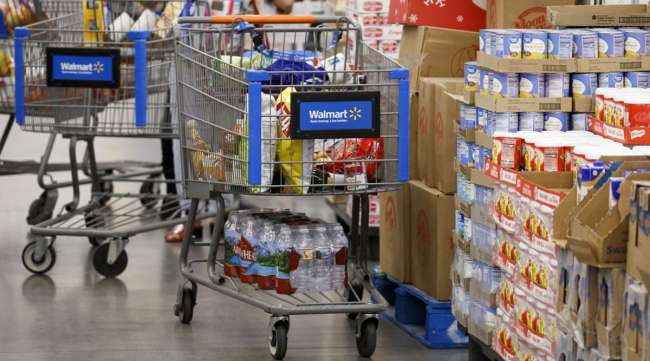Walmart Loses Another Home-Delivery Provider Amid Amazon Clash

[Stay on top of transportation news: Get TTNews in your inbox.]
Walmart Inc. is parting ways with grocery-delivery partner Skipcart, the latest defection from its network of logistics companies that often struggle to make ends meet schlepping cola and cantaloupes for the nation’s biggest food retailer.
Skipcart notified Walmart on Jan. 31 that it was terminating their relationship effective April 30, according to a letter obtained by Bloomberg News. That end date has since been pushed up to March, and Walmart has already reassigned stores covered by Skipcart to other providers. Boerne, Texas-based Skipcart handles deliveries from about 126 stores in 32 states, mostly in smaller markets, and began working with Walmart in late 2018.
A representative for Walmart declined to comment.
The departure of Skipcart follows those of Deliv last year and Uber Technologies in 2018, highlighting the tricky economics of so-called “last-mile” delivery as more and more Americans buy groceries online. Skipcart CEO Ben Jones said his company was handling about 50,000 Walmart deliveries a month, but was losing money “hand over fist.” He said he would rather focus on restaurant deliveries, which are easier and more profitable to shuttle than carloads of bottled water and paper towels.
Host Seth Clevenger went to CES 2020 in Las Vegas and met with Rich Mohr of Ryder Fleet Management Solutions and Stephan Olsen of the Paccar Innovation Center to discuss how high-tech the industry has become. Listen to a snippet above, and to hear the full episode, go to RoadSigns.TTNews.com.
“The grocery model does not work,” Jones said in an interview. “It doesn’t work today, and it’s not going to work six months from now. We’re all losing money.”
Neck-and-Neck
Walmart can’t afford to lose momentum in its market-leading grocery business, which makes up 56% of its U.S. sales and has fueled its run of 22 consecutive quarters of same-store sales growth in its home market. Amazon.com Inc. now offers two-hour grocery delivery for its Prime customers for free in more than 2,000 cities, and grocery orders more than doubled in the fourth quarter.
While the web accounts for only about 4% of the $800 billion U.S. grocery sector, adoption is increasing. Over half of all current online grocery shoppers started doing so over the past year, according to a survey of about 3,000 Americans by Morgan Stanley. Walmart and Amazon are neck-and-neck at the top of the market, the survey found, with about half of all web shoppers having used one of them in the past three months.
Walmart offers home delivery of groceries from about 1,600 stores today, double the number it had a year ago, with the goods ferried by a patchwork of companies including Postmates Inc., DoorDash Inc., Roadie and Point Pickup. Customers pay a fee of $7.95 to $9.95, which varies based on the delivery time. The retailer has also built its own internal delivery platform for self-employed drivers called Spark, which is now available in 31 states, and it’s testing autonomous vehicles as well.
Walmart’s fleet of 6,500-plus tractors and nearly 65,000 trailers earned the company the No. 4 spot on the Transport Topics Top 100 list of the largest private carriers in North America.
Food shoppers can also pick up online orders in Walmart’s parking lots for free at 3,200 stores, with another 500 coming on board this year.
Want more news? Listen to today's daily briefing:





